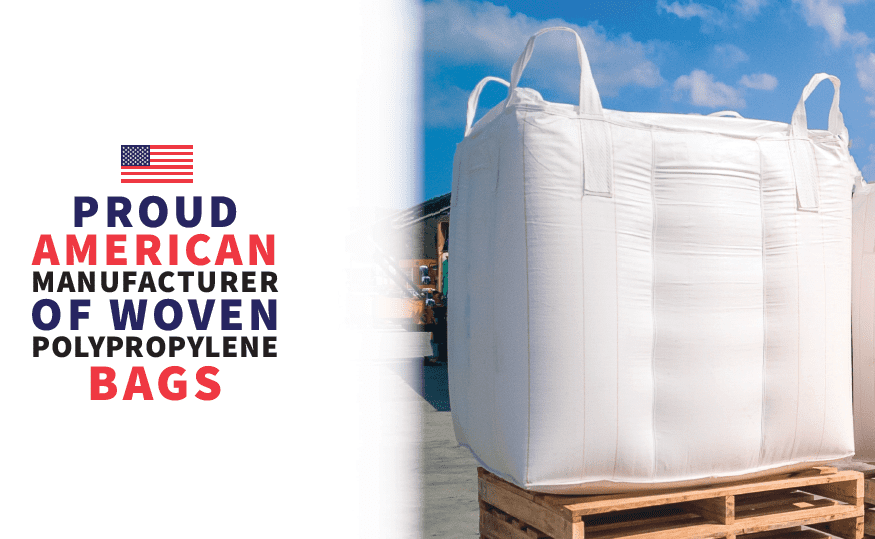Bulk bags, also known as Flexible Intermediate Bulk Containers (FIBCs), are workhorses in the industrial packaging world. They’re strong, versatile, and cost-effective, making them a popular choice for transporting and storing a wide range of dry flowable materials. But navigating the world of bulk bags can be confusing. Fear not! Today’s “Ask the Packaging Expert” tackles your most frequently asked bulk bag questions. As always, please click here to view the full selection of FIBCs that JohnPac has to offer.
Bulk Bag Basics:
Q: What exactly are bulk bags made of?
A: The common material for bulk bags is woven polypropylene (WPP). It’s a strong, lightweight, and cost-effective fabric. For specific applications we offer specialty materials with features like static control or food-grade certification.
Q: How much weight can a bulk bag hold?
A: Bulk bags come in various sizes and weight capacities, typically ranging from 500 kg (1,100 lbs) to 2,000 kg (4,400 lbs). The safe working load (SWL) should be clearly marked on the bag, so be sure to choose one that can handle your product’s weight.
Filling & Closing:
Q: What’s the best way to fill a bulk bag?
A: For even distribution and to avoid overfilling, consider utilizing filling equipment built specially to fill bulk bags. Many features can be added like densification. Overfilling can put stress on the seams and increase the risk of bag failure.
Q: What are the different top options?
A: FIBC bulk bags come in various top options to suit different filling and discharging needs. The most common is the spout top, featuring a built-in spout for controlled filling, ideal for dusty materials and connecting to filling equipment. Duffle tops have a closable top that resembles a duffel bag, offering easy filling and secure storage. Open top bulk bags are the simplest option, providing a wide opening for fast filling but minimal closure for materials that don’t require containment. Choosing the right top depends on your product, filling process, and desired level of security.
Q: What about the different bottom options?
A: FIBCs offer a variety of bottom designs for efficient discharge of contents. Spout bottoms feature a built-in remote release, ideal for powders and granulates. Discharge spouts with protective flaps add another layer of control, preventing spills during transport. B-lock closures offer a resealable option for materials needing repeated access. Conical bottoms, with their sloped design, promote complete discharge of even difficult-flowing materials like powders or flakes. Finally, full open discharge bottoms provide the fastest unloading but offer minimal containment. Selecting the right bottom depends on your material’s flow characteristics, desired discharge speed, and need for reclosure.
Safety & Regulations:
Q: Are there any safety precautions I need to take when using bulk bags?
A: Absolutely! Always inspect bulk bags for any tears, cuts, or damage before use. Never overload a bag beyond its SWL. When lifting or transporting filled bags, use appropriate lifting equipment and follow safe lifting practices. See FIBCA Safe handling guidelines here.
Q: Are there any regulations regarding bulk bag use?
A: In some cases, yes. Depending on the product being transported, there may be specific regulations concerning the type of bulk bag you can use. It’s crucial to check with regulatory bodies or your supplier to ensure your bulk bags comply with any relevant regulations such as for hazmat applications.
Beyond the Basics:
Q: How do I choose the right bulk bag for my product?
A: Consider factors like:
Product Weight & Volume: Ensure the bag’s SWL and size can accommodate your product.
Environmental Conditions: If your product is sensitive to moisture or requires UV protection, specific bag materials or liners might be necessary.
Is the product combustible? Is the product hazardous?
Q: What are some of the advantages of using bulk bags?
A: Here are some key benefits:
Cost-Effectiveness: Bulk bags are generally more affordable compared to rigid containers like drums.
Versatility: They can handle a wide range of materials and are available in various sizes and configurations.
Space Efficiency: Empty bulk bags fold flat, saving storage space.
Easy Handling: Relatively lightweight and easier to handle than some rigid containers.
By understanding these key aspects of bulk bags, you can make informed decisions and leverage their versatility and cost-effectiveness in your industrial packaging operations. Still have questions? Remember, at JohnPac, we’re your trusted partner for all your bulk bag needs. Contact us today to discuss your specific requirements and find the perfect bulk bag solution for your product.





